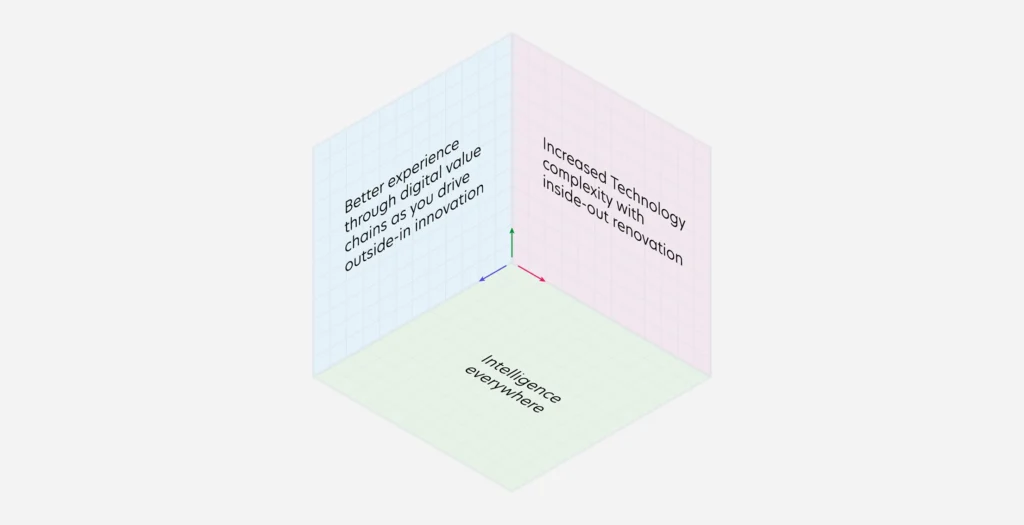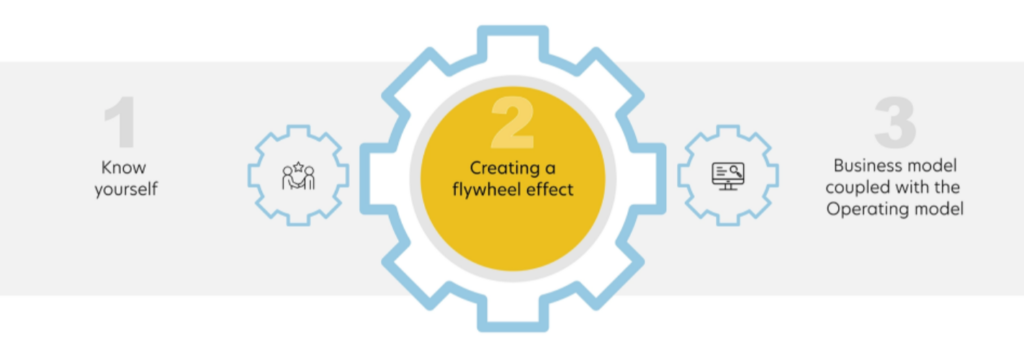Quinnox Implements Qinfinite Chaos Engineering to Help A Bottling Manufacturer
Our client is one of the largest and most complicated bottling and distribution operations in the world.
Read moreEvery business today is on a journey to be a technology company, well, almost everyone. It could be a bank, a telco, a manufacturer, a retailer or even a utility company. The only difference is how far they are in that journey.
Leaders driving such an agenda over the past few years have invariably done it across the two-pronged strategic tracks of inside-out renovation and outside-in innovation. The outside-in innovation is driven by the increasing need of businesses to create newer products and revenue channels that move at the speed of their customers’ expectations. While on the other hand, inside-out renovation is targeted at making the organization more efficient, agile and composable without having to compromise on the core business knowledge and differentiation that the company has built over the years.
In short, the value that is driven through both these strategies continuously helps innovate across the digital value chains without having to compromise on the core business knowledge and differentiation that the company has built over the years. After all, it’s difficult to let go of your core identity and what has worked in the past! Isn’t it?

But now, a third dimension has entered the mix—one that is rapidly becoming central to every leader’s agenda: Intelligence Everywhere. Generative AI has opened new possibilities, making “intelligence everywhere” a top priority for leaders. According to Gartner, by 2025, 75% of enterprises will shift from piloting to operationalizing AI, leading to a 5x increase in streaming data and analytics infrastructures. This paradigm shift has made it imperative for leaders to prioritize AI in their strategic agendas.
As software complexity grows and technology ecosystems expand, businesses must adopt a methodical approach to manage this complexity. This complexity is not merely a challenge but an opportunity for businesses to reimagine their technology infrastructure.
All this has only meant that software has not just eaten your world, but, so has complexity. The complexity has only increased and shall continue to as we get to a future with infinite possibilities!. Yes, its complex, but we don’t need to sweat, as it does not need to be complicated!.
Some business leaders underestimate the complications that come with their technology transformation journey, as they are unwilling to see through the tight coupling it has with the operating model. In reality, every technology transformation is invariably driven through an operating model transformation. And operating model transformation demands that you have a deep understanding of the existing estate across the business processes as delivered through a portfolio of applications connected to the infrastructure they operate on. So, what is stopping us from gaining this understanding?
We all know that Google was able to organise the world’s information that accelerated the internet revolution. However, there is basic difference between the internet and the enterprise estate. The volume, variety and variability of technology and the people that work on it.
Understanding the enterprise, needs us to understand the who and what constitutes the enterprise in a fluid and continuously changing technology fabric. It also demands that you appreciate the continuum of operations and modernization and their ever-diminishing boundaries as today’s bleeding edge is only going to be tomorrow’s technology debt. To complicate this more, we have a rapidly proliferating set of disciplines, each one evolving as an independent category, yet intertwined intimately with every other. Think BizOps, FinOps or even AIOps etc. As if that was not enough, we now have ML Ops, LLM Ops and so on. Each discipline with its own software and service providers. So, how do we manage this?
It is critical for leaders and organisations to think of orchestrating value across all the ecosystems of the enterprise efficiently and effectively. In today’s digital native world, the answer lies in building or adopting a platform led approach that can map both the realms of software and services through a unified lens and enables the leaders to not just know the organisation’s business and technology fabric better, but also can drive agility to decisions that lead to achieving their objectives across driving more profitability, building future readiness and deciding where to make your investments. This is what we call, ‘Intelligent Application Management (iAM)’.

Much as inventions and technological breakthroughs frequently offer more utility than just their literal intended purpose, Intelligent Application Management creates much more significant value beyond some vague notion of “better tech.” Here are three steps to redefine how you drive the future of your organization:
Any business in any industry can benefit from intelligent Application Management, but only if they recognize its full potential. In fact, iAM’s versatility to address the entire OMI continuum across both software and services leveraging an AI native approach might be its greatest selling point. There is no single “correct” approach to a successful iAM strategy, nor is there a predetermined path one must follow to implement iAM “the right way.”
You (and your business) are the authors of your particular iAM scenario and that scenario’s definition, scope, and conclusion. And therein lies the beauty of iAM: “iAM” is an apt name for this technology because, you could then say, “Knowledge is Power, AI is the future, therefore iAM”.
At Quinnox, our iAM platform, Qinfinite, embodies the principles of intelligent Application Management and is designed to empower leaders with the tools they need to gain a unified view of their organization’s technology fabric, drive agility in decision-making, and accelerate value creation across the OMI continuum.
Ready to navigate the complexities of your digital transformation journey? Discover how Qinfinite can help your organization implement intelligent Application Management and achieve your business objectives. Request for a demo now and take the next step toward a smarter, more agile future
Re-imagining BizOps using Qinfinite, Quinnox’s Next-Generation AMS Platform
Know More
Our client is one of the largest and most complicated bottling and distribution operations in the world.
Read moreAI can improve the efficiency and effectiveness of chaos engineering. AI algorithms help identify potential false positives
Read moreOur client is the largest independent mail, courier and logistics operator in the UK and Ireland
Read moreGet in touch with Quinnox Inc to understand how we can accelerate success for you.